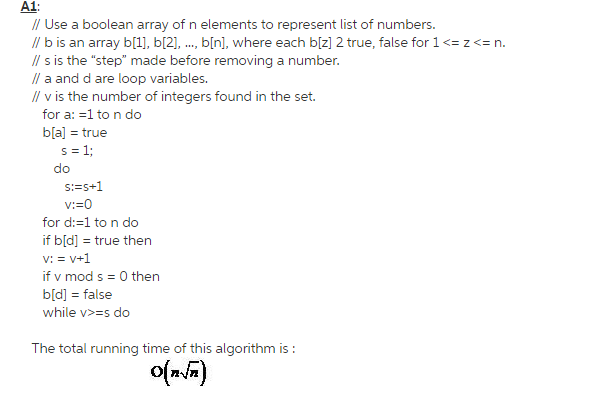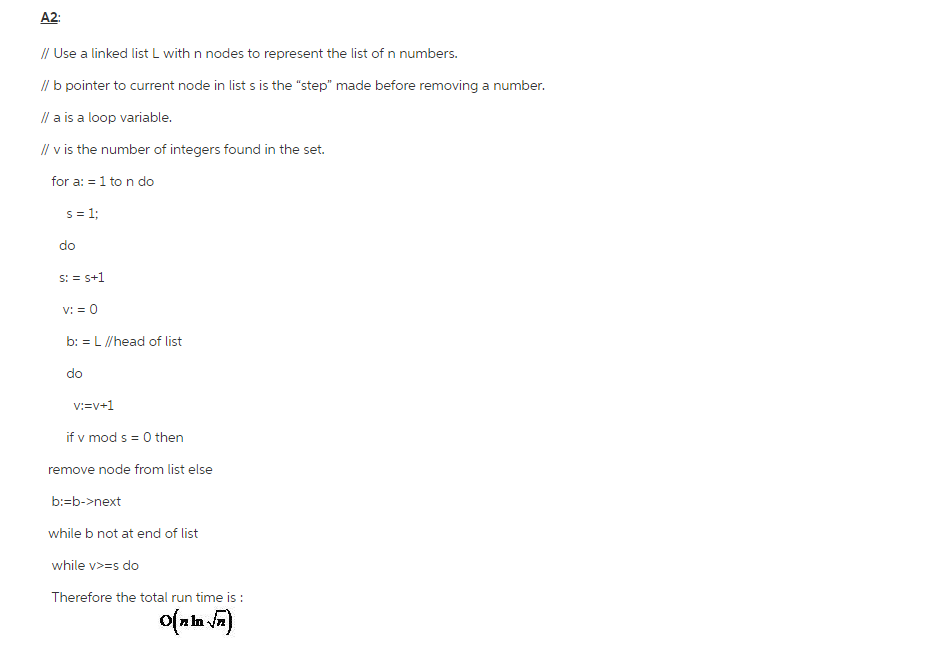Question
(Serendipity) A positive integer is said to be serendipitous if it survives the follow- ing ordeal: Step 1: S1 = Z+ Step 2: Remove every
(Serendipity) A positive integer is said to be serendipitous if it survives the follow- ing ordeal: Step 1: S1 = Z+ Step 2: Remove every 2nd number from S1, and call this set S2. Step 3: Remove every 3rd number from S2, and call this set S3, ... ... Step i: Remove every ith number from Si-1, and call this set Si, .... .... Say that S is the set of positive integers that remain after the ordeal is over. Then S is the set of all serendipitious numbers; in fact, S = {1, 3, 7, 13, 19, .....}.
Your mission, should you choose to accept it, is to nd all serendipitous numbers smaller than n. Consider the following two (ideas for) algorithms.
A1: Use a boolean array of length n and make repeated passes over the array, removing numbers until it completes a pass without any removals.
A2: Maintain a linked list of numbers still thought to be serendipitious; at each pass shrink the list as needed, halting when a pass is completed with no removals. Analyze the runtime of A1 and A2. Suggestion: first write pseudocode (in English and readable by a human) for each algorithm.
I saw a solution, but I don't know how it works and how to calculate the runtime. Can anybody help me? Thanks!


Step by Step Solution
There are 3 Steps involved in it
Step: 1

Get Instant Access to Expert-Tailored Solutions
See step-by-step solutions with expert insights and AI powered tools for academic success
Step: 2

Step: 3

Ace Your Homework with AI
Get the answers you need in no time with our AI-driven, step-by-step assistance
Get Started


